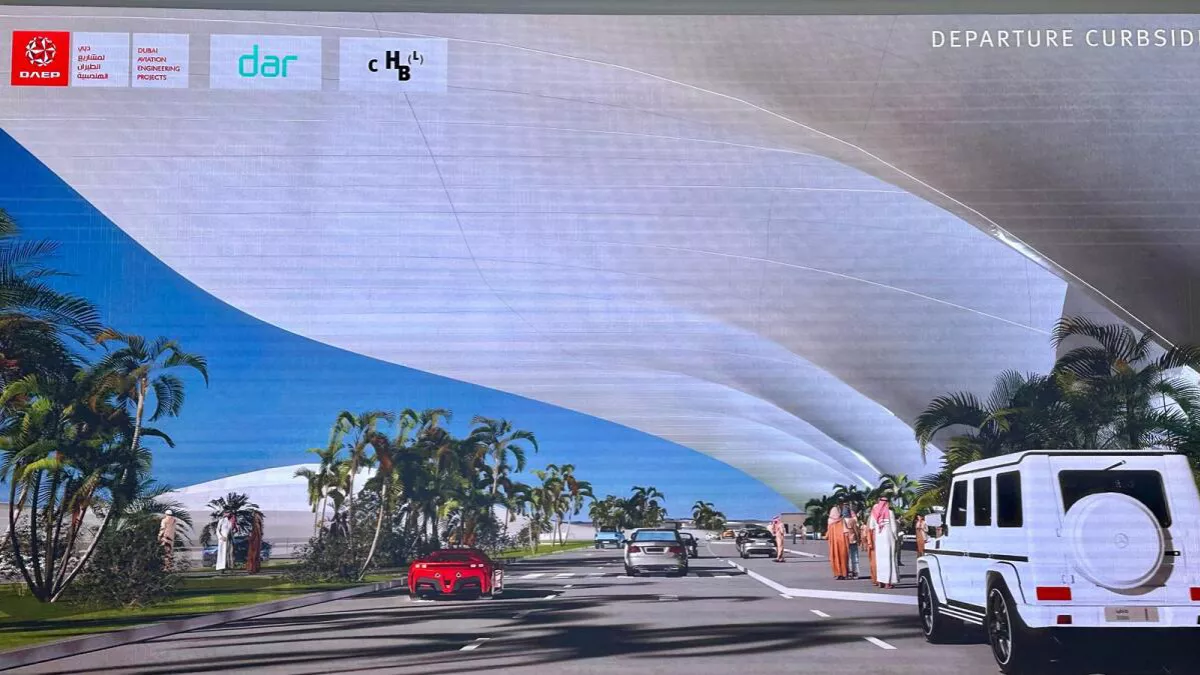Dubai's Al Maktoum International Airport has elevated rail system, indoor tropical forest and much more
16 May 2024
News
With its own retail stores, green areas, recreational areas, and transit system, Dubai's Al Maktoum International Airport (DWC) is destined to grow into a city unto itself. The UAE's Vice-President, Prime Minister, and ruler of Dubai, Sheikh Mohammed bin Rashid Al Maktoum, just revealed the first pictures of the new passenger terminal via Twitter.
Dubai Aviation Engineering Projects (DAEP) showcased elements such as an elevated rail system that runs through an interior tropical forest and large LED screens that portray marine and landscape surroundings at the 23rd Airport Show, offering a thorough look at the airport's architecture.
DAEP states that DWC wants to provide passengers with unmatched comfort, leisure, and mobility.
DAEP highlights how innovation, culture, and tradition are all skillfully incorporated into the DWC design. Air taxis, autonomous cars, a new Metro line, high-speed rail (Etihad Rail), and other means of transportation will all provide the airport with good access to Dubai and the UAE.
Prior to arriving at the airport, travelers can check-in their luggage effortlessly from hotels, special city counters, or even from home. Passengers will be greeted at the airport's curbside drop-off zone by the largest sun canopy in the world, after traveling along multi-level highways.
Trees will be planted throughout the passenger terminals to create a cool ambiance, and large green spaces—including an interior tropical garden—will offer places to unwind. DWC, which would span 70 square kilometers, will have five parallel runways and 400 airplane gates. There will be plenty of room set aside for stores, eateries, entertainment venues, and leisure zones.
Modern airport innovations that have never been seen in the airline industry before will be installed, such as sophisticated facial recognition systems that will expedite admission into departure gates and reduce wait times. There will be separate halls for first and business class passengers as well as economy class passengers in the west terminal building, which will serve both origin and destination passengers.
A subterranean network of galleries and batch centers with the capacity to process up to 30,000 bags per hour will revolutionize baggage handling at DWC. This system will go through a thorough security and sorting procedure that makes use of cutting-edge screening methods and automated guided vehicles. After that, pop-up hatches will transport baggage straight to aircraft stands, causing as little disturbance as possible to ground handling operations on the airfield.
Five parallel runways at DWC are intended to handle code F aircraft, which are distinguished by their longer length and greater weight. Examples of such aircraft are the A-380 and B747-800. There will be four runways, each more than 1,500 meters apart, allowing for up to four parallel aircraft approaches at the same time.
Modern airplane guiding systems will be installed on all four of the 4.5-kilometer runways to improve operating effectiveness and safety. The airfield will also feature double taxiways, quick departures, and large ground service equipment roads.
Plans for achieving total sustainability in DWC operations have been outlined by DAEP. All of the sustainable energy sources used to power the airport's terminals and concourses will mostly come from photovoltaic solar panels. To efficiently control energy use, the buildings will include solar glass and high-performance insulation.
The expansion is intended to proactively handle increasing passenger demands, exceeding initial forecasts, and ultimately establish Dubai as the world's leading aviation hub, according to DAEP.
